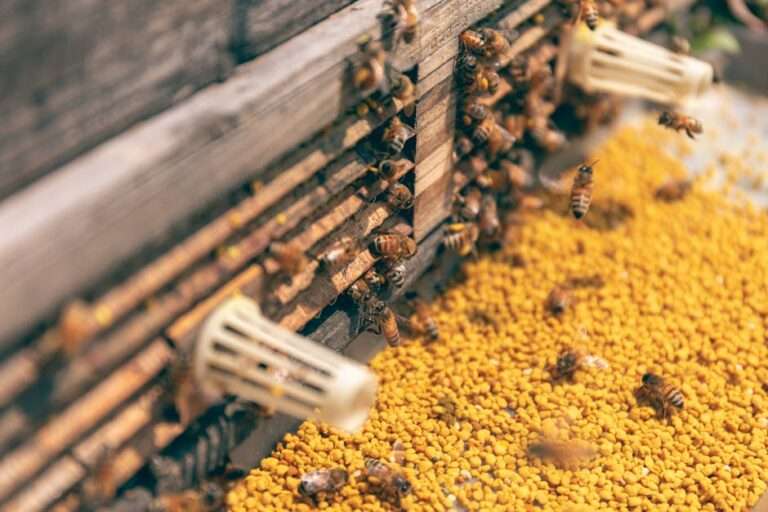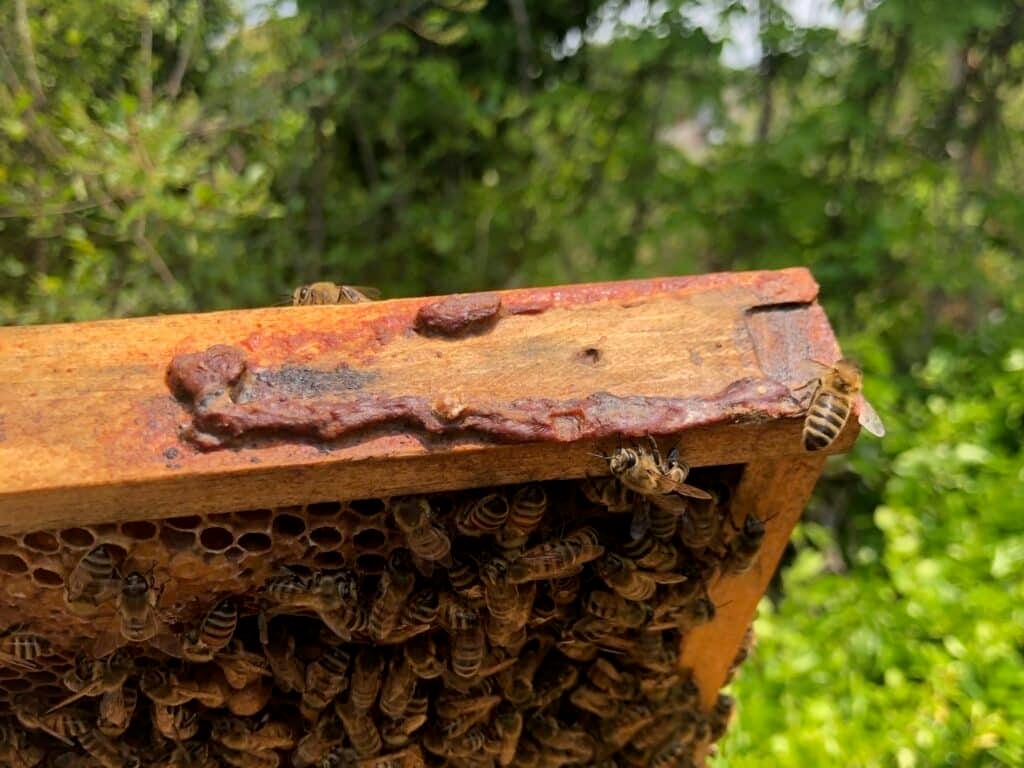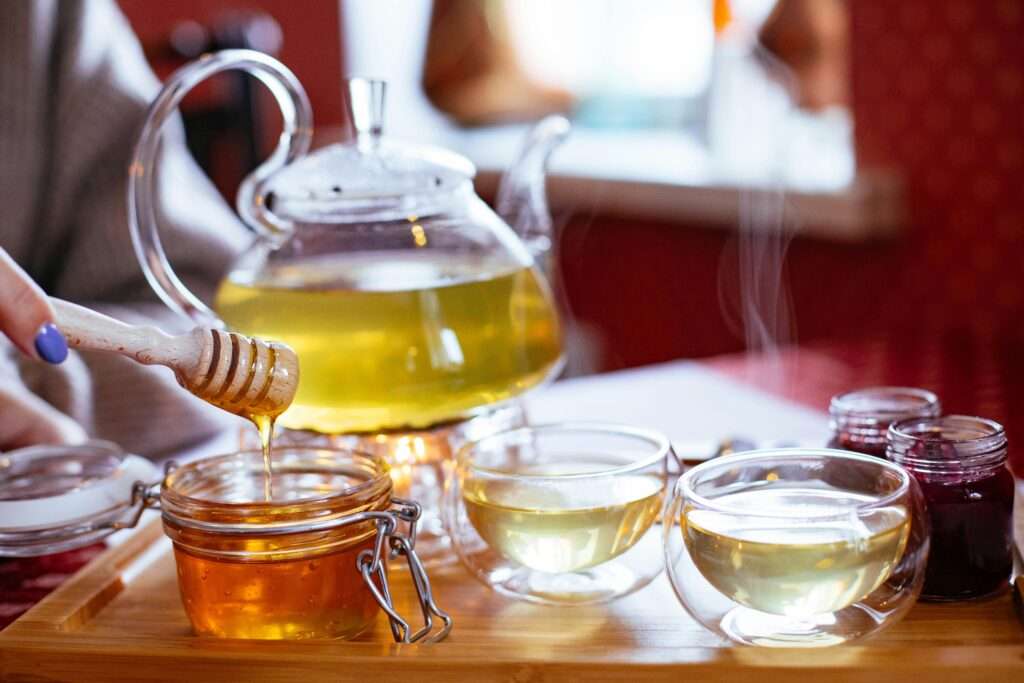Here’s some of the best ways to collect pollen from bees
The most effective and ethical way to collect bee pollen is by using specialized pollen traps that are installed at the hive entrance, below, or above the brood chamber.
These traps force returning bees to pass through a mesh or narrow opening, which gently scrapes off some of the pollen pellets from their hind legs and causes the pellets to drop into a collection tray, without harming the bees or collecting all of their pollen[1][2][3].
Key tips and techniques for collecting bee pollen:
- Choose the right pollen trap: There are various designs, including entrance, bottom-mounted, and top-mounted traps. Entrance (front porch) traps are easy to start with for beginners, but have a small capacity, while bottom and top traps can collect larger quantities and often produce cleaner pollen[1][3].
- Placement and hive selection: Mount the trap so that the only entrance to the hive is through the trap; block any other entrances if necessary[4]. Use your strongest hives for pollen collection, and avoid collecting from every hive at once to sustain their health[3].
- Season and timing: Harvesting after midsummer is recommended, as brood production slows and bees are less reliant on incoming pollen[3]. Avoid using traps during periods of heavy brood rearing or swarm season.
- Only collect for short periods: Do not leave traps on continuously. Most traps are designed to remove only around 40-50% of incoming pollen, to ensure the colony still receives enough for brood rearing. Rotate traps between hives, and consider collecting for alternating weeks or a few days at a time to reduce stress on any single colony[1][3][4].
- Frequent harvesting: Collect pollen from the trap daily or every other day to prevent molding and avoid attracting pests (ants, wax moths, hive beetles), as trapped pollen is slightly moist and highly nutritious[1][3][4].
- Processing and storage: Immediately after harvesting, clean pollen to remove debris, then freeze it in airtight bags or containers to maintain flavor and prevent mold. Some beekeepers also dry pollen in a dehydrator or oven at low temperatures (start at 120°F for an hour, then 95°F for 24 hours) before storing[1][4].
- Ethical considerations: Collect only reasonable amounts—never all the pollen entering the hive—to avoid weakening the colony. Performing collection in moderation and rotating hives helps preserve the bees’ health and productivity[3][5].
Summary of the best practice:
- Use a properly installed pollen trap on strong hives.
- Harvest frequently and process pollen promptly.
- Never over-harvest from a single colony; rotate traps as needed.
- Store pollen in the freezer or dehydrate to preserve its nutritional value and prevent spoilage.
This approach ensures a sustainable supply of bee pollen while maintaining the bees’ well-being and the hive’s productivity[1][3][4].
⁂
- https://www.foxhoundbeecompany.com/blogs/miscellaneous/ultimate-guide-to-bee-pollen-collection-tips-and-techniques-for-beekeepers
- https://hannasbees.ie/bee-pollen-how-to-harvest/
- https://www.betterbee.com/instructions-and-resources/how-to-use-a-pollen-trap.asp
- https://backyardbeekeeping.iamcountryside.com/plants-pollination/how-to-harvest-bee-pollen/
- https://www.reddit.com/r/Beekeeping/comments/zhczij/it_it_ethical_to_harvest_pollen/
Ad – Amazon Associate Store
Bestseller #1
- PREMIUM MATERIAL: Bee pollen collector is made of high quality plastic, which is environmentally healthy.
- EASY TO INSTALL: Pollen collector is located at the entrance of the hives and is easy to install, suitable for newbies.
- CONVENIENT COLLECTION: The pollen on the bee’s leg touches the edge of the hole and falls into the beekeeping pollen tra…
$19.99
Bestseller #2
- <1> Easily collect pollen without having to lift up the entire hive.
- <2>Easily adjusted to either collect pollen or allow the bees unrestricted entrance to the hive without having to remove…
- <3> Easily access draw allows you to collect pollen without removing the unit.
$23.99
Bestseller #3
- ★★★★★【Function】This is a plastic pollen trap with removable ventilated pollen tray used in beekeeping industry.
- ★★★★★【Easy Installation】This pollen collector hangs at the entrance of a hive supported by two small holes.
- ★★★★★【Durable&Harmless】Made of high quality plastic,it is durable and harmless to bees.
$20.39






